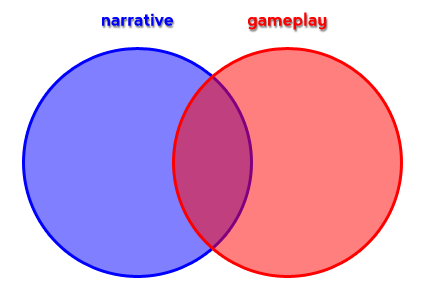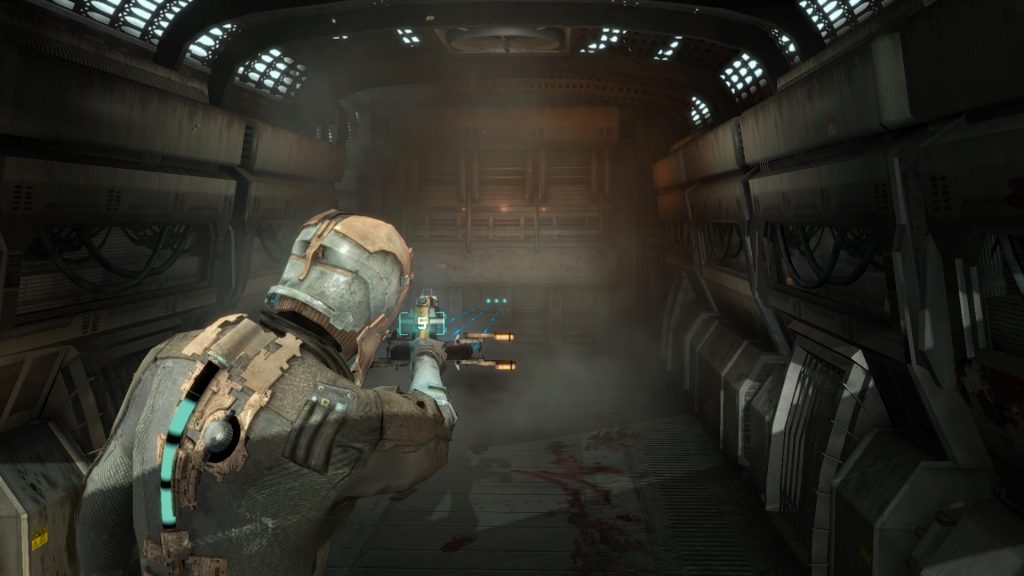
I recently came across the Frictional Games blog and have spent the last few weeks trawling through it’s archive. It provides a wealth of informaiton on game design, and in particular discussions on the point of game narrative. One particular post, 4 Layers, a narrative design approach, written by Thomas Grip, Frictional’s creative director, raised the concept of the mental model, and the impact this can have, not only on game design, but also on a players experience of a game.
Mental modelling is something we all do, every day. Essentially it is the manner in which we use prior knowledge and experience to understand new situations; allowing us to function in a novel scenario, make decisions with only limited input, and predict what might be the result of these decisions. As an example lets consider a trip to the barbers (perhaps for a virtual haircut?). Our regular barber might be shut, like mine often is around the time of new PS4 releases, but the prospect of going to a new barber doesn’t necessairily fill us with trepidation. We have a fairly well developed mental model for dealing with the situation. Perhaps on this occasion however, our barber is attacked by a gang of ruthless Ninjas. Apart from anything else, this incongruity does not fit with our established mental model and so we adapt our model with this new input (assuming we get out alive). On our next trip to the barber our mental model will include this vital piece of Ninja related information and we will be on the lookout for a repeat attack.
This continuing process of model updating is something that occurs in normal game play and it is something that can be exploited by game designers, and sound designers too. Just as in the real world, a trip to the barbers in a game scenario will bring our mental model into play. However, this particular model will also be informed by our previous experiences within the game. Perhaps we are indeed being hunted by Ninja’s, so a potential ambush is already factored into our model. This leads onto the next point Thomas makes in his consideration of the mental model; that not all game play has to happen on the screen. In our scenario for instance, whilst you are ensconced in the barbers gown, having your number three all over (or your bangs feathered, whatever floats your boat), you are also alive to the possibility of an attack by black clad, sword wielding lunatics, because your mental model is primed to expect such an event. The important point is that this attack doesn’t actually need to happen for the game play to still be successful. As a player, you will create and evaluate the various possible scenarios in your head and postulate aspects of game play that need not even be programmed into the game. For instance, you might spend some time considering which barber to visit, then which seat to take when you get there, perhaps furthest from the door? The one with the best vantage point? Then you might consider which haircut to get, which will be the quickest to reduce your vulnerability etc. Of course all this begs the question, if you are indeed being pursued why stop for a haircut? But even this can be factored into the mental model we have developed for the character; vanity, coolness in the face of danger, hiding in plain sight, creating a disguise. Any one of these could be a valid reason for the stopping for a haircut and you will accept it as long as it is consistent with the narrative and our model.
So what of sound in this process? The first factor to consider is that to fully exploit a player’s mental modelling process the game needs to be designed with this as a development goal. As Thomas points out on the Frictional blog
…this sort of mental model-based gameplay comes from the player’s high level interpretation of the game’s systems, graphics, sound and so forth.
So sound already plays an integral role in the process by creating and supporting a game play environment that informs the player’s mental model. The important thing to note here is that this is all high level interaction. The player is not working at a system level where they either feel, or are compelled by the narrative to test and query the functionality of the system itself, rather they are actually playing the narrative, and all their decisions are made based on the mental model, essentially the game they have created inside their head based on their assimilation of all the available data.
For sound to function at this high level it needs to be an integral part of the narrative design process, not just supporting the game world but being given the opportunity to inform, enhance and even subvert the narrative, and by proxy, the player’s mental model.
A prime example of this is the manner in which surround sound is used in Dead Space 1 & 2. In an interview with Gamasutra, Wright Bagwell, creative director at Visceral games, explained the importance of (surround) sound in delivering some of the game’s moments of shock and horror. He specifically relates a scenario where an off-screen, surround sound effect is used to bait a player towards a certain part of a room where they are then ambushed. Whilst this might on one level seem like simple game mechanics to create a ‘shock’ moment, if we consider it as part of the player’s mental model development, it can have a profound effect on their game play. On the next occasion they enter such an environment they will be primed for a similar encounter. And this creates anticipation. The player is suddenly even more acutely aware of their surroundings via the sound track. This opens a number of possibilities for the narrative, to exploit this surround sound cue to heighten the players level of engagement and immersion.
Subsequent rooms might feature no baiting FX, thereby heightening the anticipation leading to a point where a player does encounter a similar FX in their surrounds they are faced with a difficult decision about how to respond. Careful manipulation of the narrative at this point can stretch out this simple baiting system across multiple encounters; substituting the sound effect for a visual clue will only complicate matters further for the player. And when the coup de grace is eventually delivered the build up of anticipation is satisfied and the mental model is validated. In this scenario so much of the game play and decisions making is extra-game, taking place almost exclusively in player’s head but carefully directed by the narrative.
In his interview with Gamastura Wright Bagwell also notes that sound guys are usually the last guys to touch a game. But perhaps there’s an argument for bumping sound up the line a little, integrating it with the narrative development process, and ensuring that a game doesn’t just have a great soundtrack, but one which is inextricable and indispensible from the game play.

G’day,
Great article, really enjoyed reading and also taught me a few things!
Regards
damon